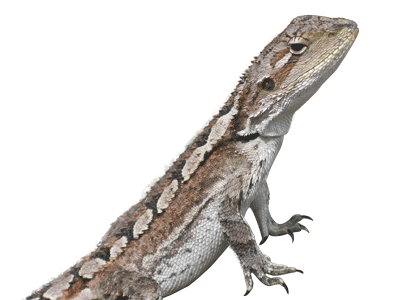Environmental
Consulting & Reporting
Contaminated Sites
Impact Assessment
Wetland Investigations
Acid Sulfate Soils
Flora & Fauna Surveys
CONTAMINATED SITES
The Contaminated Sites Act (2003) defines a contaminated site as any area that has a substance present above concentrations which presents or has the potential to present a risk of harm to human health or the environment. Commonly occurring contaminants include petroleum hydrocarbons, solvents, pesticides, heavy metals, excess nutrient loading and asbestos fibre.
Bioscience provides contaminated site investigations using a tiered approach in accordance with current legislation, and the subsequent Regulations and Contaminated Sites Management Series Guidelines (DWER).
For a contaminated site investigation to yield meaningful results the following actions are required: (1) the careful, systematic and detailed study of past land use, (2) the identification of substances which might cause concern, and (3) an understanding the nature of the local soil and groundwater. This leads to the creation of a conceptual site model (CSM) that describes the possible pathways by which exposure to potential contamination may occur. This in turn defines the analytical investigations required to confirm site status.
Frequently, DWER guidelines require an independent contaminated sites auditor to work with Bioscience to produce a Mandatory Auditors Report.
Detailed investigations can lead to assurance that sites are acceptable, or to the development of management plans to contain or remediate the land.
WETLAND INVESTIGATIONS
Wetlands are areas where the soil becomes inundated or waterlogged, either permanently or seasonally, with fresh or saline water and are generally inhabited by wetland adapted plant and animal communities. Wetlands vary widely because of regional and local differences in soils, topography, climate, hydrology, water chemistry, vegetation, and other factors, including human disturbance.
Driven by the recognition of the importance of wetlands in the Swan Coastal Plain ecosystem, and the fact that European settlement had caused a rapid loss of wetlands, studies were initiated in the late 1980’s to 1990’s to map wetlands in the Perth area, and to assign management categories to protect them from future decline.
The definition, location and management category of wetlands can change over the longer term, so new wetlands can form and old wetland can dry, thus losing their wetland characteristics. It was also recognised that some of the original wetland mapping was done on a broad scale and may prove in time to have the boundaries imprecisely mapped or inappropriate management categories assigned.
Bioscience provides expert advice on current DBCA wetland boundaries and management categories, and where appropriate, conducts the necessary investigations to justify a modification to the boundaries or management categories as per the DBCA Guidelines.
Wetland investigations require hydrological, biological and chemical analysis. It is upon the results and data of this integrated approach that management plans can be formulated to preserve and protect worthwhile wetlands.
FAUNA & FLORA SURVEYS
Western Australia is blessed with a rich and diverse range of endemic flora and fauna, making it one of the world’s biodiversity “hot spots”. This biodiversity is a hallmark of environmental health but requires special expertise to quantify and catalogue.
Bioscience has extensive skill and experience in undertaking both quantitative and qualitative flora and fauna assessments in accordance with EPA Guidance 51 Surveys (Terrestrial Flora and Vegetation Surveys for Environmental Impact Assessment in Western Australia), ranging from small remnant areas to much larger ecosystems.
With our ever-expanding herbarium collection and our innovative Research and Development project (in collaboration with other leading botanists), in which we are developing methods for a DNA-based taxonomy of native flora, we are well versed to service all your Flora and Fauna surveying requirements. Our flora field work stretches across the vast extent of the state, from the Kimberley in the north to the south coast, from the central deserts to the temperate forests.
FAUNA & FLORA SURVEYS
Western Australia is blessed with a rich and diverse range of endemic flora and fauna, making it one of the world’s biodiversity “hot spots”. This biodiversity is a hallmark of environmental health but requires special expertise to quantify and catalogue.
Bioscience has extensive skill and experience in undertaking both quantitative and qualitative flora and fauna assessments in accordance with EPA Guidance 51 Surveys (Terrestrial Flora and Vegetation Surveys for Environmental Impact Assessment in Western Australia), ranging from small remnant areas to much larger ecosystems.
With our ever-expanding herbarium collection and our innovative Research and Development project (in collaboration with other leading botanists), in which we are developing methods for a DNA-based taxonomy of native flora, we are well versed to service all your Flora and Fauna surveying requirements. Our flora field work stretches across the vast extent of the state, from the Kimberley in the north to the south coast, from the central deserts to the temperate forests.

IMPACT ASSESSMENT
In Australia there are legislative requirements for potential environmental impacts, both positive and negative, to be assessed prior to a project or development proposal being approved. Consequently, Environmental Impact Assessment (EIA) is a fundamental stage in any proposal and warrants a systematic and orderly evaluation by experienced environmental professionals.
For over 15 years Bioscience has provided professional EIA in accordance with both WA state and federal legislation (i.e. Environmental Protection Act 1986 Part IV and Environment Protection and Biodiversity Conservation Act 1999,respectively). We offer EIA from preliminary desk-top investigations to a comprehensive investigation and report, involving environmental surveys, conceptual modelling and community consultation.
IMPACT ASSESSMENT
In Australia there are legislative requirements for potential environmental impacts, both positive and negative, to be assessed prior to a project or development proposal being approved. Consequently, Environmental Impact Assessment (EIA) is a fundamental stage in any proposal and warrants a systematic and orderly evaluation by experienced environmental professionals.
For over 15 years Bioscience has provided professional EIA in accordance with both WA state and federal legislation (i.e. Environmental Protection Act 1986 Part IV and Environment Protection and Biodiversity Conservation Act 1999,respectively). We offer EIA from preliminary desk-top investigations to a comprehensive investigation and report, involving environmental surveys, conceptual modelling and community consultation.

We endeavour to provide expert advice to ensure environmental impacts are identified early in the planning and design phase of a proposal so that measures can be been taken to avoid, and where this is not possible, to minimise impacts on the environment.
ACID SULFATE SOILS
Acid Sulfate Soils (ASS) can form where inundation of land by fresh or seawater causes oxygen depletion so that organic matter cannot break down in the usual way, but instead accumulates as peat and sulfides. Upon exposure to oxygen, sulfuric acid forms in these soils which in turn releases other toxic substances, including heavy metals, into the surrounding environment. ASS frequently occur in Western Australian, particularly within the Swan Coastal Plain, and become a significant issue when disturbed by excavation, drainage or declining groundwater levels.
Understanding the nature and distribution of Acid Sulfate Soils is an essential feature of planning various land development projects in low lying areas.
Note that your site should be investigated for ASS if any of the following works are proposed:
- Acid sulfate soil disturbing subdivision or development that is subject to conditional approval requiring the investigation and management of acid sulfate soils;
- Soil or sediment disturbance in an area depicted on an ASS risk map as Class I ‘high to moderate risk of ASS occurring within 3m of natural soil surface’ (e.g. construction of roads, foundations, installation of underground infrastructure, drainage works, land forming works, dams and aquaculture ponds or sand/gravel extraction);
- Soil or sediment disturbance with excavation from below the natural water table in an area depicted on an ASS risk map as Class II ‘moderate to low risk of ASS occurring within 3m of natural soil surface but high to moderate risk of ASS beyond 3m of natural soil surface’;
- Lowering of the water table, whether temporary or permanent (e.g. for groundwater abstraction, dewatering, installation of new drainage, modification to existing drainage), in areas depicted in an ASS risk map
- As Class I ‘high to moderate risk of AASS or PASS occurrence’ or Class II ‘moderate to low risk of AASS or PASS occurrence within 3m of natural soil surface’;
- Any dredging operations;
- Extractive industry works (e.g. mineral sand mining); and
- Flood mitigation works, including construction of levees and flood gates.
- Bioscience is experienced and equipped to facilitate all the steps of ASS assessments as required by planning, environmental and regulatory authorities:
-
Desktop Assessment and Site Inspection
-
Soil Sampling
-
Laboratory Analysis
-
Reporting Results and Management Recommendations
-
Acid Sulfate Management Plans

Bioscience is experienced and equipped to facilitate all the steps of ASS assessments as required by planning, environmental and regulatory authorities:
- Desktop Assessment and Site Inspection
- Soil Sampling
- Laboratory Analysis
- Reporting Results and Management Recommendations
- Acid Sulfate Management Plans
As well as undertaking all the field work components, Bioscience has a laboratory in Forestdale equipped to analyse AAS samples. Our research program has developed a DWER-recognised test methodology specific to our local conditions which is both inexpensive and time-saving compared to previous testing method.
Finally, we provide expert advice, regulatory compliance and ASS Management Plans (if required) in relation to both the Acid Sulfate Soils Guidelines (DWER) and Bulletin 64 – Acid Sulfate Soils (WA Planning Commission) in a comprehensive report.
